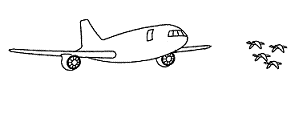Bird Strike Committee Proceedings

Bird Strike Committee-USA/Canada Joint Annual Meeting: 2nd (2000)
Date of this Version
August 2000
Document Type
Article
Abstract
Deer living on and around airports pose a threat to aircraft. The consequence of a deer-aircraft strike can be serious and potentially tragic. Nationally, cervids (deer) accounted for 67% of all reported mammal-aircraft strikes and have caused damage in 81% of deer strikes in the United States (Cleary et al. 1999). Due to the potential for damage, the Federal Aviation Administration and USDA-APHIS-Wildlife Services (WS) program recommend a zero-tolerance of deer on an airfield. Deer densities at Newport News / Williamsburg International Airport (PHF) were as high as 171.5 deer/mi2 at the onset of the Wildlife Hazard Assessment conducted by WS. Several factors contributed to this extraordinary deer density including: inadequate fencing, abundant high quality food, insufficient hunting pressure on the AOA and a lack of hunting on adjacent properties, and unlimited security cover to provide shelter. Prior to the cooperative agreement between PHF and WS, the deer depredation plan in effect at PHF did little to limit the growth of the deer herd. However, following the removal of 113 deer by WS through sharpshooting, the deer population at PHF was successfully reduced by 88 percent, subsequently reducing the threat to aviation.

